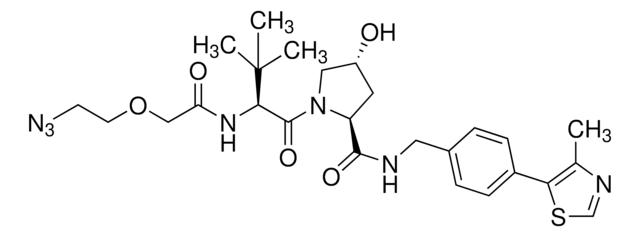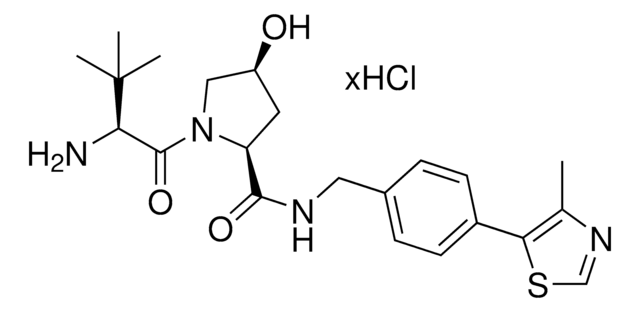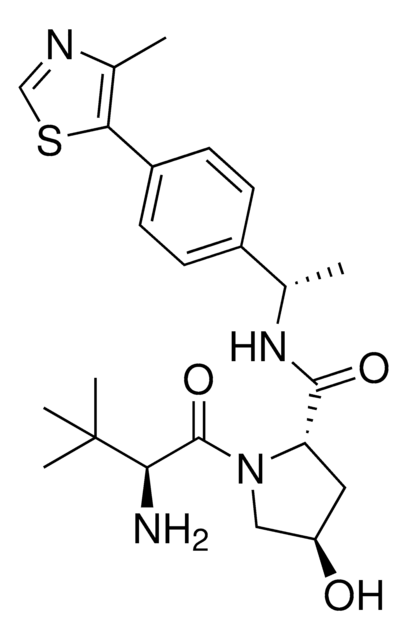Kluczowe dokumenty
909351
(S,R,S)-AHPC-PEG5-azide
≥98%
Synonim(y):
(2S,4R)-1-((S)-20-Azido-2-(tert-butyl)-4-oxo-6,9,12,15,18-pentaoxa-3-azaicosanoyl)-4-hydroxy-N-(4-(4-methylthiazol-5-yl)benzyl)pyrrolidine-2-carboxamide, Blok konstrukcyjny degradera białek dla badań 11779, Koniugat VH032, Koniugat ligandu Crosslinker-E3 Ligase, Szablon do syntezy ukierunkowanego degradera białek
About This Item
Polecane produkty
ligand
VH032
Próba
≥98%
Formularz
(Liquid or Semi-Solid or Paste or Solid)
przydatność reakcji
reaction type: click chemistry
reagent type: ligand-linker conjugate
grupa funkcyjna
azide
temp. przechowywania
2-8°C
ciąg SMILES
O=C(COCCOCCOCCOCCOCCN=[N+]=[N-])N[C@H](C(N1[C@H](C(NCC2=CC=C(C3=C(C)N=CS3)C=C2)=O)C[C@@H](O)C1)=O)C(C)(C)C
Zastosowanie
Inne uwagi
Portal: Building 11779 Degraders for Targeted Protein Degradation
Targeted Protein Degradation by Small Molecules
Small-Molecule PROTACS: Nowe podejścia do degradacji białek
Targeted Protein Degradation: from Chemical Biology to Drug Discovery
Wpływ długości łącznika na aktywność PROTACs
Informacje prawne
produkt powiązany
Kod klasy składowania
10 - Combustible liquids
Klasa zagrożenia wodnego (WGK)
WGK 3
Temperatura zapłonu (°F)
Not applicable
Temperatura zapłonu (°C)
Not applicable
Wybierz jedną z najnowszych wersji:
Certyfikaty analizy (CoA)
Nie widzisz odpowiedniej wersji?
Jeśli potrzebujesz konkretnej wersji, możesz wyszukać konkretny certyfikat według numeru partii lub serii.
Masz już ten produkt?
Dokumenty związane z niedawno zakupionymi produktami zostały zamieszczone w Bibliotece dokumentów.
Produkty
Partial PROTACs are a collection of crosslinker-E3 ligand conjugates with a pendant functional group for covalent linkage to a target ligand.
Partial PROTACs are a collection of crosslinker-E3 ligand conjugates with a pendant functional group for covalent linkage to a target ligand.
Global Trade Item Number
| SKU | GTIN |
|---|---|
| 909351-50MG |
Nasz zespół naukowców ma doświadczenie we wszystkich obszarach badań, w tym w naukach przyrodniczych, materiałoznawstwie, syntezie chemicznej, chromatografii, analityce i wielu innych dziedzinach.
Skontaktuj się z zespołem ds. pomocy technicznej








